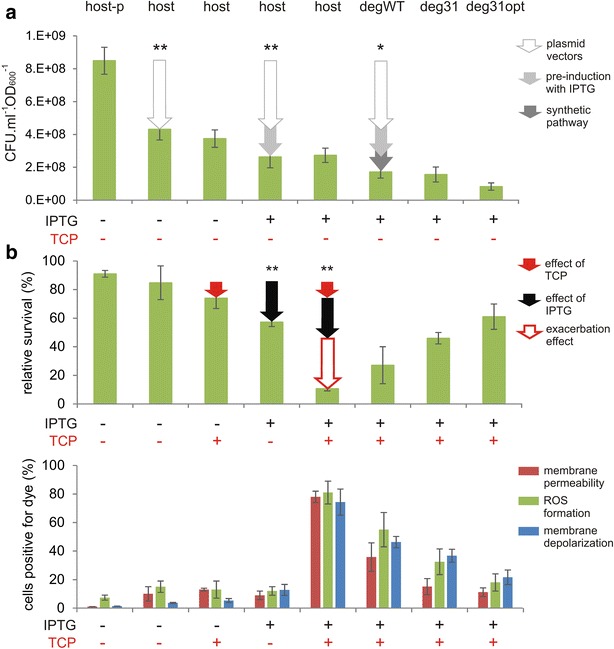Fig. 2.

Effects of metabolic burden and TCP toxicity on physiological parameters of Escherichia coli BL21(DE3) cells and three recombinants expressing the synthetic metabolic pathway. a Viability of cells non-induced or pre-induced with IPTG determined by plating before incubation in phosphate buffer. The effects of metabolic burden stemming from the presence of plasmids, pre-induction with 0.2 mM IPTG, and expression of the synthetic pathway are indicated by coloured arrows. Asterisks denote significance in decrease of cell count caused by each of three effects at either P < 0.05 (*) or P < 0.01 (**) when compared with preceding condition. b The percentage of surviving cells (upper graph) and the corresponding physiological parameters determined by flow cytometry (lower graph) after incubation in buffer with or without 2 mM TCP. The separate effects of TCP, IPTG, and the exacerbation of TCP toxicity in cells pre-induced with IPTG are indicated by coloured arrows. Asterisks denote significant difference in the decrease of cell count caused by each of three effects at P < 0.01 when compared with preceding condition. Physiological parameters including membrane permeability, formation of reactive oxygen species (ROS), and membrane depolarization were evaluated by staining the cells with appropriate dyes as explained in the Methods section. Error bars represent standard deviations calculated from at least five independent experiments. CFU colony forming units; host-p E. coli BL21(DE3) without plasmids; host E. coli BL21(DE3) with the empty pETDuet and pCDF plasmids
